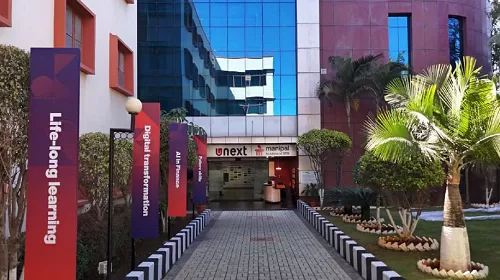By Ran Kedem, Partner And Business Development Director, Reali Technologies Ltd.
Smart city concept – background
The smart city concept integrates information and communication technology (ICT), and various physical devices connected to the IoT (Internet of things) network to optimize the efficiency of city operations and services and connect to citizens.
Smart city technology allows city departments and management as well as related entities to interact directly with both community and city infrastructure and to monitor what is happening in the city and how the city is evolving. ICT is used to enhance quality, performance and interactivity of urban services, to reduce costs and resource consumption and to increase contact between citizens and government.
A smart city is a technologically modern urban area that uses smart technology to collect specific data to improve the operations across the city.
Major part of the smart city solution is the Water & Wastewater networks. In this article we will present the smart wastewater (Smart wastewater network – SWWN) concept.
Smart Sewer (wastewater) concept – background
A wastewater system generally comprises
o Wastewater source
o collection and transport system,
o Treatment of wastewater plant
o Transport system of treated wastewater for disposal or reuse
If in the past it was common to look at each of the sewer components as standalone, in smart network the approach is to look and manage all the sewer components as one integrated system.
This new approach has significant advantages a Wastewater sources and the volume of wastewater affect the entire system from the collection and transport network and up to the composition of the wastewater and the nature of the treatment facility required to produce effluent able to meet environmental discharge or recycled water quality requirements.
Information management
In smart wastewater system the information management is becoming increasingly important and a feature of regulatory control programmes. Increasingly, information needs to be communicated transparently within the utility as well as to relevant authorities, users, and other stakeholders.
Data aggregation and data availability in real time is crucial to manage better crisis events by having Real-time warnings for exceptional events. With advanced ICT system the ability to Manage & Control remotely all system components. The real time Information enables improved service, quick reaction time to malfunctions and contributes for better and safer management of the system in both, routine, and crisis events.
Unfortunately, it is also one of the biggest challenges water utilities are facing today. According to recent market surveys among 500 water utilities executives, the main Data challenge that they are facing is (61%) is the ease of access to data, furthermore the main barriers in adapting digital transformation (integrating IIOT data) are: costs, technology complexity and security.
In this article we will present the most advanced smart Water & wastewater IIoT system exciting today. This system was developed exactly to overcome those challenges providing, Smart & simple, affordable, and highly secured holistic solution that makes all data (aggregated) available and easily accessible in real time.
Smart wastewater reuse concept – IIoT solution
Why do we need Smart Sewer system?
Water and sewer utilities are facing a significant challenge; the infrastructure and Data management of their facilities, network and process became increasingly complex, while the demands for real- time, efficient, and safe operation of facilities and networks, both in routine and during crisis events, became more stringent and necessary. Also, the demands from costumers from one hand and regulators from the other hand is increasing all the time.
Smart system will reduce operational common risks:
• Risk of ignorance – Not knowing in Real time what is going on
• Risk of ignoring – Ignoring existing and future problems
• Risk of late response – Late response to ongoing problems and crisis events
and at the same time will increase efficiency by improving collaboration, coordination and data sharing in the organization and reducing respond time. Reducing risks + increasing efficiency = improving the safety, customer satisfaction & the bottom line of the utility
The main challenges of smart sewer system are:
o The system is spread on a large area from the collection area and up to the reuse/disposal area of the treated water. This area is changing in most cases from urban area to a rural area, with long distance between the different site and facilities and in many cases with a challenging topography change between the different sites.
o The system is made of many different components providing a huge amount of data (flow,
discharge, water level, water quality…) which are all relevant for safe and efficient operation.
o A large variety of facilities from underground manhole to pump stations, reservoirs, and up to complicated Wastewater treatment plan.
o A large variety of equipment (Sensors, PLC, analyzers, pumps, valves…), manufactured by
different manufacturer and using different communication protocols.
o In the system combined real time devices for monitoring and control together with data loggers for monitoring which is not real time.
o Large number of users from different disciplines (Technicians, operators, local managers, senior managers, professional experts…) located in different places (on site level, utility level, municipality level…), who needs different data in different
Based on the above challenges the main KPI of the smart sewer system are:
Centralized system for the entire network from the collection stage up to the end use of the recycling water (See Draw 1).
o Comprehensive, real-time remote control & data management system from the infrastructure level through the ICT & SCADA level up to the Cyber security & data analytics level.
o Combined system for real time and data loggers while connecting all the relevant devices in the different facilities to the system.
o IT/OT convergence – integrates information technology (IT) with operational technology (OT) used to monitor events, processes, and devices, makes real time operational adjustments at the network’s sites, machines, and offers significant benefits in cost, quality, speed, reliability, and safety (see draw 2)
o Optimization of coordination and collaboration between the different departments in the water utility. Making the relevant data available and accessible in teal time to all the relevant personal in the utility with no limits of the amount of the data and the location of the users.
Real time “Asset health” information (See draw 3) to the operational and senior management team as, you can’t manage efficiently what you can’t see!





